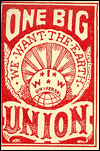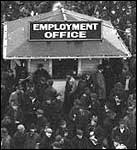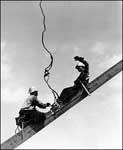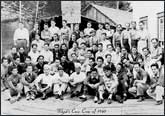
Welcome to the portal for digital resources associated with the Labor Archives of Washington. The archival collections of the Labor Archives are physically housed in the Special Collections Division of the University of Washington Libraries: the archive is a collaborative project between the Division and the Harry Bridges Center for Labor Studies. A selection of materials from these collections has been digitized and added to the University of Washington's Digital Collections, to which this portal provides access. This project has made hundreds of primary textual and visual resources relating to Pacific Northwest labor history more accessible to the public. Those wishing to view materials that have not yet been digitized are encouraged to contact the Special Collections Division for further information and assistance.
Researchers interested in learning more about Pacific Northwest labor history are invited to explore this website and the related online resources to which links are provided. Use the topics below to begin to explore our Digital Collections, and discover more about the history of workers and labor unions. Related digital collections from UW Special Collections of organizations and individuals that opposed unions are included in the portal for the convenience of researchers.

The Industrial Workers of the World is an international union that was created in 1905, and rapidly found success recruiting members in the Pacific Northwest. In the 1910s and 1920s, I.W.W. members (often called "Wobblies") were identified with the more radical aims of the organized labor movement in the region. This radical reputation led to violence against the I.W.W., most infamously in the Everett Massacre of 1916 and the Centralia Massacre of 1919. more...

The Seattle General Strike in February of 1919 was a six day work stoppage by tens of thousands of workers. It was proposed and carried out by the Central Labor Council of Seattle, an arm of the American Federation of Labor, with the support of many local unions. The events of the strike were used nationwide to alarm citizens about the rise of "Bolshevism", and in its aftermath the city's labor unions wrestled with the question of why the strike had failed to achieve their aims. more...

The organization of workers in the Pacific Northwest in the 1910s and 1920s was seen as a threat to the interests of the businesses employing them and the surrounding community. Anti-labor organizations then formed to oppose the labor unions, which they often did with the help of paid labor spies, who infiltrated union meetings in order to supply local businesses with inside information. more...

The New Deal in the 1930s had a profound effect on the lives and work of many in the Pacific Northwest. New Deal programs from the Civilian Conservation Corps to the Civil Works Administration gave people employment all across the region in cities, farms and forests. Major building projects like the Grand Coulee Dam created opportunities for thousands of workers. more...

Organized labor, which had such a profound effect on the Northwest during the first half of the 20th century, has remained a significant presence in the region throughout the rest of that century and up to today. Labor activism was revived by the civil rights movements of the 1960s and 1970s, and concerns about the impact of globalization boiled over into the streets of Seattle during the WTO's conference in 1999. more...

For much of its existence, the Cannery Workers and Farm Laborers Union Local 7 (now Inlandboatmen's Union of the Pacific, Region 37) has been comprised of mainly Filipino American and Asian American members and officers. Union members played significant political and social roles in the community and many were authors or editors who documented their work and immigration experiences. Because of the union's integral part in the work and social lives of the Filipino American and Asian American community of the Pacific Coast, the organization's records document the labor history and ethnic, industrial, and cultural history of the region. more...

This digital web archive documents the stories of those involved with the historic SeaTac and Seattle minimum wage campaigns of 2013-2014 (also called the 15 Now movement). Audio and video oral history interviews and transcriptions, photographs, archived websites, and digitized documents show the struggle of coalitions of workers, union officers and members, nonprofits, and faith organizations to win the new minimum wage and other important protections. The stories of others involved in the campaigns including politicians, business people, and opponents are included here as well. Visit the website

Richard V. "Dick" Correll (1904-1990), described as "one of the leading masters of printmaking in the West", was best known for his powerful black and white linoleum cuts, etchings and woodblock prints. His themes ranged from landscapes, animals and agricultural scenes, harbors and ships, and music and dance to those which reflected his lifelong concern with political and social issues. more...